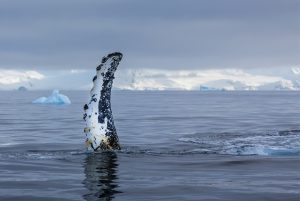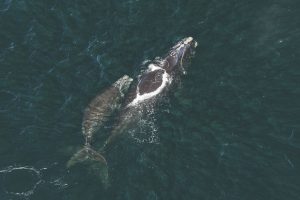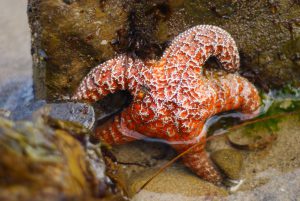Three whale species face increasing threats from noise and ship traffic in Canadian waters, according to the Committee on the Status of Endangered Wildlife in Canada (COSEWIC). At its most recent semi-annual meeting, COSEWIC assessed new data on sei, fin and Sowerby’s beaked whales and determined all face some level of conservation risk in the Atlantic and Pacific oceans.
Particularly, COSEWIC recommended that sei whales in the Atlantic Ocean be listed as endangered, meaning they face imminent extinction in their local habitat. Previously, not enough data was available to assess their risk of extinction. Sei whales in the Pacific Ocean have been listed as endangered under the federal Species at Risk Act (SARA) since 2005.
“The sei whales in the Atlantic used to be data deficient, which meant we really didn’t know,” says Hal Whitehead, co-chair of the COSEWIC Marine Mammals Specialist Subcommittee and a biology professor at Dalhousie University in Halifax. “We have enough information now to say these guys should be endangered, too.”
COSEWIC is an independent advisory board that assesses the conservation status of wildlife species in Canada, but species receive no formal protection under SARA until the federal environment minister acts on the committee’s recommendations.
The committee also assessed the fast-swimming fin whales as being of special concern in both Atlantic and Pacific waters, meaning they are at risk of becoming threatened or endangered. In the Pacific, however, this assessment represented an improvement in the whales’ conservation status.
“Fin whales in the Pacific used to be threatened, so we are a bit more optimistic … than we were 10 years ago,” says Whitehead.
John Reynolds, chair of COSEWIC and an aquatic ecology professor at B.C.’s Simon Fraser University, says that while whales are hard to count, researchers have been seeing greater numbers of fin whales in Pacific U.S. waters and hope to see the same in Canadian waters soon.
In the Atlantic, Sowerby’s beaked whales remain of special concern, a status they’ve held since 2006 largely as a result of commercial whaling. These whales often die as a result of beaching. The reason for this is uncertain, but Reynolds says noise from ship traffic could be a factor.
“You combine all the marine traffic with seismic activity [for oil and gas exploration] and it does look like the Atlantic Ocean is getting a lot busier and a lot more noisy,” he says. “I’m not surprised an animal [that] is sensitive to noise is having trouble recovering from a history of whaling.”
Noisier oceans have experts concerned
Sei, fin, and Sowerby’s beaked whales all evolved in oceans quieter than those today, according to Reynolds.
Sowerby’s beaked whales are especially sensitive to noise pollution, having evolved in deeper waters far from the coast. They use echolocation for daily functions such as hunting, socializing, and navigation. Noise from large ships, naval training operations, and oil and gas exploration disrupt these functions. In recent years, these activities have ramped up in the Atlantic Ocean.
“It’s not just direct ship strikes that are a problem,” says Reynolds. “There’s entanglement in fishing gear, there’s noise, there’s disturbance.”





